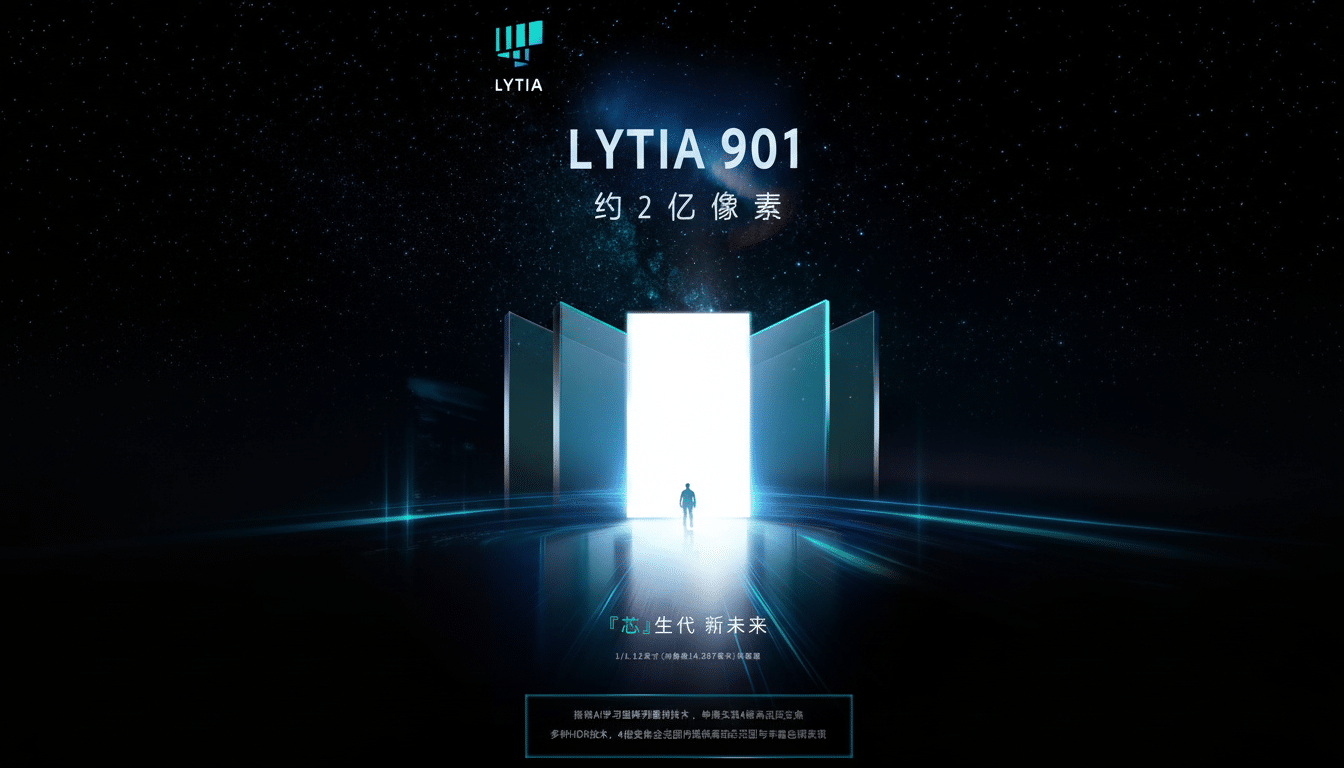Sony Semiconductor has announced the Lytia 901, its first 200MP smartphone image sensor — signaling Sony’s serious stance within ultra-high-resolution mobile photography. Differently from Samsung’s 200MP options, the new chip ships in a larger format and with bigger pixel pitch. The new chip is already being delivered to phone makers and could headline future flagship handsets from OPPO and vivo.
More Silicon, Better Photos with Larger Pixels
The Lytia 901 has a 1/1.12-inch type sensor with pixels that are 0.7µm on a side. That trumps Samsung’s existing 200MP workhorse, the Isocell HP2 (approximately 1/1.3-inch, 0.6µm), on two key fronts: total sensor area and individual pixel size. There are no high-res specs for the sensor outside of its dimensions, but by loosey-goosey math, we can calculate that Sony’s chip’s imaging area is around 35 percent larger while it has roughly 36 percent more pixel surface for light to hit.

Those gains should translate to cleaner shadows, more forgiving mixed-light scenes, and less aggressive noise reduction — especially when shooting at night or indoors. They would also lead to shallower depth of field at a given framing and aperture, meaning more natural subject separation without being reliant on heavy computational blur.
Real-World Shooting-Centered Features and Autofocus
Sony is leaning heavily on pixel binning for balancing resolution and sensitivity. The Lytia 901 features 16-in-1 binning to produce default 12.5MP images with a downsampled pixel pitch of 2.8µm. Larger effective pixels generally translate into improved low-light performance, more seamless tonal transitions, and faster, more accurate autofocus in low light.
All-pixel autofocus spans the entire frame, which makes it easier for the camera to pull focus on a subject in motion without leaving hunting artifacts behind. That full-spanning focusing approach has paid dividends in more recent Sony sensors, and here it’s just as important on account of the ultra-tight 200MP array.
For zoom, Sony touts up to 4x in-sensor magnification. Combined with AI learning-based remosaicing, the system is designed to avoid loss of fine detail during crops and also help prevent the appearance of moiré and zippering — a place where high-megapixel sensors can suffer if their demosaicing isn’t up to scratch.
Dynamic range is also a priority. Lytia 901 features Dual Conversion Gain HDR for single-frame highlight control and Hybrid Frame HDR combining multiple short exposures with DCG data. Sony claims this method can achieve more than 100dB of dynamic range, which should mean clipped skies and murky shadows go the way of tardigrades while avoiding the ghosting artifacts that sometimes trouble “traditional” multi-frame HDR.
How It Compares With Rivals in 200MP Class
The 200MP space has been pretty much entirely owned by Samsung for a few product cycles, with the Isocell HP2 driving phones such as the Galaxy S25 Ultra. Sony’s entry upends the equation by providing a physically larger option with larger base pixels, two characteristics that photographers typically favor when light is low or scenes are high in contrast.

Now, the sensor is only part of the story. The results will depend on the quality of the lenses, stabilization, as well as how careful phone makers are to tune their own processing pipelines around sensors from Qualcomm or MediaTek — especially when it comes to demosaicing and HDR blending. We can only guess at how OEMs will layer on their own AI-driven sharpening, denoising, and super-resolution — areas where the raw sensor’s capabilities might either shine or be obscured by torturous algorithms.
When and Where You’ll See It in Upcoming Phones
Sony reports that the Lytia 901 is currently in volume production and may be ordered from Sony or its authorized distributors. The OPPO Find X9 Ultra and vivo X300 Ultra are expected to launch with the sensor being used as their main wide camera, based on the latest industry scuttlebutt. Given the 200MP reserves, manufacturers can also offer high-quality 2x or even 4x crops without changing lenses — though optical telephoto modules are still ahead at longer focal lengths.
There’s no information on video specs released publicly. With the sensor’s resolution and readout ambitions, 8K capture and some HDR video modes should be reasonable expectations, although any particular frame rate or format will depend on how the OEM implements it and how much bandwidth their ISP can spare. Those specs will be important when it comes to things like rolling shutter control, motion rendering, and low-light video noise.
What It Means for Buyers and Mobile Photography
If done correctly, the Lytia 901 could make for crisp 1x shots, more realistic-looking 2x crops, and superior low-light photos with less smearing where high-megapixel phones sometimes swap detail out in favor of heavy noise scrubbing.
It also bakes in the groundwork for speedier autofocus and stronger HDR performance, which benefits everyday shots more than sheer headline resolution does.
Real-world judgments will come when retail phones ship and independent testing labs subject the new chip to a controlled interplay of scenes. It’s still just a piece of paper, but Sony’s would-be new 200MP sensor is a significant step up in size and capability, and adds a healthy dose of competition to the current 200MP regime.

